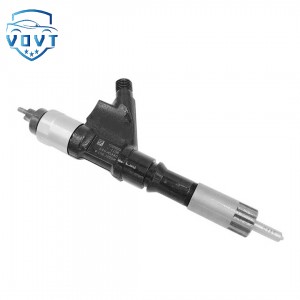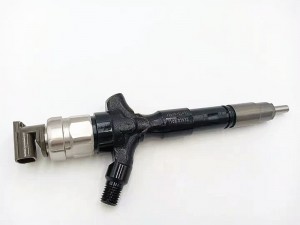Good Price Common Rail Injector Diesel Fuel Injector 23670-30110 for Denso Toyota Hilux Hiace D4D 1KD 2KD FTV
Products Description
| Reference. Codes | 23670-30110 |
| Application | / |
| MOQ | 4PCS |
| Certification | ISO9001 |
| Place of Origin | China |
| Packaging | Neutral packing |
| Quality Control | 100% tested before shipment |
| Lead time | 7~15 working days |
| Payment | T/T, L/C, Western Union, Money Gram, Paypal, Ali pay, Wechat |
Fuel injector : an important part of the diesel fuel supply system
Dynamic fluid leakage belongs to one of the durability indicators of the fuel system, which means that under extreme road conditions or intense driving scenarios, the fluid will not flow out of the tank pressure compensation device, generally referred to as the refuelling limit valve, gravity valve and two types of venting valves, and the internal pressure of the tank is maintained in a safe range. The fuel system is designed as an open structure in order to meet the ventilation requirements, and is connected to the environment through the charcoal canister. The refuelling limit valve and gravity valve are opened and closed according to the force change of the built-in float, as shown in Figure 2. When the pressure inside the tank is greater than the preset opening pressure of the valve, the float opens and the oil and gas are discharged and adsorbed by the activated charcoal in the charcoal canister, in order to alleviate the vehicle's evaporative emission pollution. Oil may leak into the charcoal canister through the open valve under dynamic conditions, resulting in abnormal fuel supply or filling of the tank, soaking of the charcoal canister, cracks in the tank, and other problems affecting the overall ventilation performance of the fuel system.
The proposed control strategy for each cycle of fuel injection time, duration and number of injections is based on engine speed and driver inputs, and its control algorithm can calibrate the engine MAP online; the proposed high-pressure pump control strategy for the starting condition of common rail diesel engine requires the injection MAP to form a feed-forward control module; the proposed periodic function based on the lumped model is proposed to compute the corrected fuel quantity, where the fluctuating amplitude of the main injected quantity is still obtained from the MAP diagram; the feed-forward rail control is performed using the MAP of engine speed, current common rail pressure (hereinafter referred to as rail pressure) and injected quantity. In this case, the fluctuation amplitude of the main injection volume is still obtained by the MAP; the feed-forward rail pressure control is performed using the MAPs of engine speed, current common rail pressure (hereinafter referred to as rail pressure), and injection volume to stabilise the pressure fluctuation and to achieve precise fuel injection. The MAP map plays a key role in most of the fuel control strategies, but needs to be obtained through extensive experiments. In the case of continuous injection, the amount of fuel injected fluctuates as the time between injections changes, and the cost of MAP tests for fluctuating amounts of fuel under different operating conditions increases dramatically in order to reflect the fluctuations.























